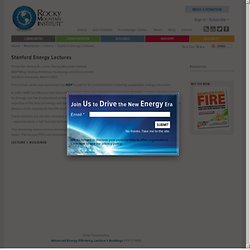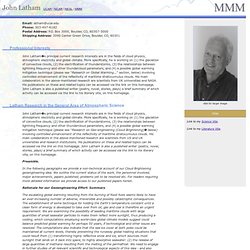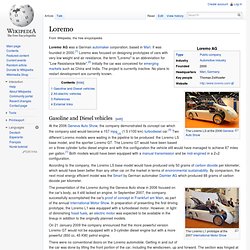

South Asian Network for Development and Environmental E. SANDEE is governed by an independent Board of policy makers, scholars and donors.

Adhikari, Bhim Bhim Adhikari is a Senior Program Specialist at Canada's International Development Research Center (IDRC) and works specifically on the environmental economics program. His main research interest is in environment and development, particularly poverty-environment nexus, climate change adaptation, ecosystem services and institutions and environmental resource management. Over the past twenty years, Bhim has worked with a number of organizations and academic institutions, including the Institute for Water, Environment and Health- the United Nations University's think tank on water.
At the World Conservation Union (IUCN) in Pakistan, he tackled issues around environmental fiscal reforms and mainstreaming environment into poverty reduction strategies. Hasan, Syed Rizwana Syeda Rizwana Hasan is an enrolled lawyer with the Supreme Court of Bangladesh. Stanford Energy Lectures. Presenter: Amory B.

Lovins, Rocky Mountain Institute MAP/Ming Visiting Professor for Energy and Environment Stanford University, March 2007 This lecture series was sponsored by MAP as part of its commitment to fostering sustainable energy education. In 2001, MAP and Michael and Diane Ming made a five-year pledge to co-fund the MAP/Ming Visiting Professorship for Energy and the Environment at Stanford University. Through this initiative, leading professionals have shared their expertise in the field of energy and the environment with tomorrow's inventors, policy makers, educators and leaders. Amory Lovins represents the fifth and final MAP/Ming Visiting Professor. These lectures are are also available as podcasts from Stanford University. The streaming videos below download real-time but do not allow a way to enlarge the screen enough to read the slides. Cloud seeding. MMM - John Latham's Individual Webpage. John Lathams principal current research interests are in the fields of cloud physics, atmospheric electricity and global climate.

More specifically, he is working on (1) the glaciation of convective clouds, (2) the electrification of thunderstorms, (3) the relationships between lightning frequency and other thundercloud parameters, and (4) a possible global warming mitigation technique (please see "Research on Geo-engineering (Cloud Brightening) below) involving controlled enhancement of the reflectivity of maritime stratocumulus clouds. His main collaborators in the above-mentioned research are scientists from US and UK universities and research institutions. His publications on these and related topics can be accessed via the link on this homepage. John Latham is also a published writer (poetry, novel, stories, plays) a brief summary of which activity can be accessed via the link to his literary vita, on this homepage. Preamble. Rationale for our Geoengineering Effort: Summary.
Loremo. Loremo AG was a German automaker corporation, based in Marl.

It was founded in 2000.[1] Loremo was focused on designing prototypes of cars with very low weight and air resistance, the term "Loremo" is an abbreviation for "Low Resistance Mobile".[2] Initially the car was conceived for emerging markets such as China and India. The project is currently inactive. No plans to restart development are currently known. Gasoline and Diesel vehicles[edit] At the 2006 Geneva Auto Show, the company demonstrated its concept car which the company said would become a 157 mpgUS (1.5 l/100 km) turbodiesel car.[3] Two different Loremo models were waiting in the pipeline to be produced: the Loremo LS base model, and the sportier Loremo GT.
The presentation of the Loremo during the Geneva Auto show in 2006 focused on the car's body, as it still lacked an engine. There were no conventional doors on the Loremo automobile. 10xE FACTOR 10 ENGINEERING. Factor Ten Engineering (10xE) aims to help engineers, architects and their clients attack resource-intensive design problems, such as manufacturing processes, buildings and vehicles, using RMI's whole-system principles in order to produce fundamentally better results. 10xE currently offers design principles and a growing set of case studies—many of them derived from RMI’s experience base.

Rather than a rigid formula, 10xE is a set of ideas for shaping the design space and design approaches within it. These ideas will be used by those purchasing or approving design services, as well as design practitioners. Windcatcher. An ab anbar with double domes and windcatchers in the central desert city of Naeen, near Yazd, Iran A windcatcher (Persian: بادگیر bâdgir: bâd "wind" + gir "catcher", Arabic: ملقف malqaf [1][2]) is a traditional Persian architectural element to create natural ventilation in buildings.[3] Windcatchers come in various designs: uni-directional, bi-directional, and multi-directional. Windcatchers remain present in many countries and can be found in traditional Persian-influenced architecture throughout the Middle East, including in the small Arab states of the Persian Gulf (mostly Bahrain and Dubai), Pakistan and Afghanistan.[4] Background[edit] Central Iran shows large diurnal temperature variation with an arid climate.
Most buildings are constructed from thick ceramics with high insulation values. The windcatcher's effectiveness had led to its routine use as a refrigerating device in Persian architecture. A small windcatcher is called a shish-khan in traditional Persian architecture.